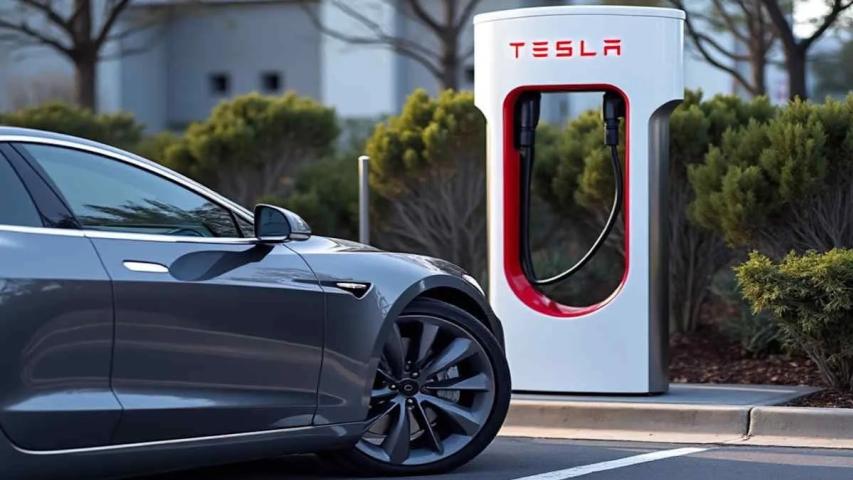Introduction
As a professional EV charger manufacturer in China, Topper Company delivers dependable electric vehicle charging station equipment and comprehensive charging solutions.Electric vehicles (EVs) are a critical solution to reducing greenhouse gas emissions and mitigating climate change. As more drivers make the switch to electric, a key question arises: how sustainable is the EV charging process itself?
The answer is that EV charging is significantly more sustainable than traditional gasoline fueling, no matter the current energy source. While the global energy mix is still largely fossil-fuel-dependent, renewable energy sources are rapidly increasing. Charging EVs with power from renewable sources like solar, wind, geothermal, nuclear, hydro, and tidal energy can dramatically reduce atmospheric emissions.
According to the International Energy Agency (IEA), only 36% of the world’s energy comes from low-carbon sources today, but that number is rising daily. The IEA projects that from 2022 to 2027, global renewable power capacity will increase by 2,400 gigawatts (GW)—roughly the current total power output of China. This forecast is 30% higher than the IEA’s projections just a year ago.
Furthermore, the IEA predicts that more than 90% of global electricity expansion over the next five years will come from renewable sources. This signifies that the world will add as much renewable power in the next five years as it has in the past two decades. As renewable energy becomes more widespread, powering EVs sustainably will drastically reduce greenhouse gas emissions and help bring the transportation sector closer to carbon neutrality.
Building a Sustainable EV Charging Business
The rise in EV adoption opens vast opportunities for businesses to develop sustainable EV charging infrastructures. However, success in this emerging market requires a strategic, long-term approach. Here are key practices for establishing a sustainable, future-proof EV charging business.
1. Start with the Right Site
In business, sustainability is synonymous with long-term success. Selecting the right location for EV charging stations forms the foundation for a resilient operation. Key considerations include:
-
Market Relevance: Choose locations that serve your target audience both now and in the future. Busy commercial zones, highway rest stops, and residential areas with high EV adoption are prime spots.
-
Scalability: Ensure the site has room for expansion. As EV adoption grows, the demand for charging stations will rise, so plan for future growth.
-
Technological Flexibility: Ensure the infrastructure can accommodate evolving charging technologies. Future upgrades to faster and more efficient chargers should be possible without major overhauls.
2. Prioritize Safety and Serviceability
Installing EV charging stations should be done without disrupting existing operations or compromising safety. Building with safety and serviceability in mind ensures smooth operations and customer satisfaction.
-
Clear Signage and Safety Measures: During installation, ensure the site is well-marked to guide customers safely and minimize disruption to normal business activities.
-
Maintenance and Service Accessibility: Design stations for easy maintenance to minimize downtime and prevent operational inefficiencies.
-
Data-Driven Safety Protocols: Use data from your network to predict maintenance needs and address potential hazards proactively.
3. Utilize Data for Operational Efficiency
Once your charging stations are operational, data collection becomes critical. Monitoring performance, user patterns, and energy consumption can drive better decision-making.
-
Performance Metrics: Regularly assess key performance indicators (KPIs) such as uptime, energy usage, and transaction volumes. Identifying patterns and anomalies helps optimize operations.
-
Revenue Optimization: Understanding usage patterns and customer behavior allows for dynamic pricing models that maximize revenue.
-
Energy Management: Integrate energy-efficient practices and renewable sources like solar panels to reduce your carbon footprint.
4. Future-Proof Your Infrastructure
The rapid pace of innovation in the EV sector makes future-proofing essential. Stay ahead of technological advancements and industry trends to maintain a competitive edge.
-
Upgrade Capability: Design your infrastructure to facilitate easy upgrades, such as preparing conduits for higher-capacity wiring or reserving space for additional chargers.
-
Modular Design: Use a modular approach to ensure components can be easily swapped or enhanced without disrupting service.
-
Interoperability: Ensure compatibility with various EV models and charging standards to accommodate diverse user needs.
5. Stay Engaged with the Industry
Keeping up with industry developments is crucial for success. Participate in conferences, join industry groups, and maintain dialogue with experts to stay informed.
-
Networking: Engage with thought leaders to gain insights into best practices and emerging technologies.
-
Training and Development: Invest in continuous training for your team to stay up-to-date with technological innovations and safety standards.
-
Regulatory Compliance: Regularly review local and international regulations to ensure your charging infrastructure remains compliant as standards evolve.
Sustainability Beyond Charging
Sustainability in EV charging extends beyond just powering vehicles. Incorporating circular economy principles can further reduce environmental impacts. For example, using recycled materials in charger production or implementing battery recycling programs creates a more sustainable ecosystem.
Additionally, partnerships with renewable energy providers can ensure that charging stations run on clean energy, creating a closed-loop system that maximizes sustainability. As renewable energy grids strengthen, integrating on-site energy storage solutions can improve reliability and reduce pressure on the grid during peak demand periods.
Conclusion
EV charging offers a promising path to a greener future. By strategically placing charging stations, prioritizing safety, leveraging data, and adopting future-ready infrastructure, businesses can build sustainable, profitable operations. As the global push for renewable energy accelerates, EV charging will play an increasingly crucial role in reducing carbon emissions and shaping a cleaner, more sustainable world.
By staying ahead of industry trends and making informed, data-driven decisions, businesses can ensure long-term success in the evolving EV landscape. The future of sustainable mobility lies not only in the vehicles themselves but also in the infrastructure that supports them.Know more about Google SEO Directory











